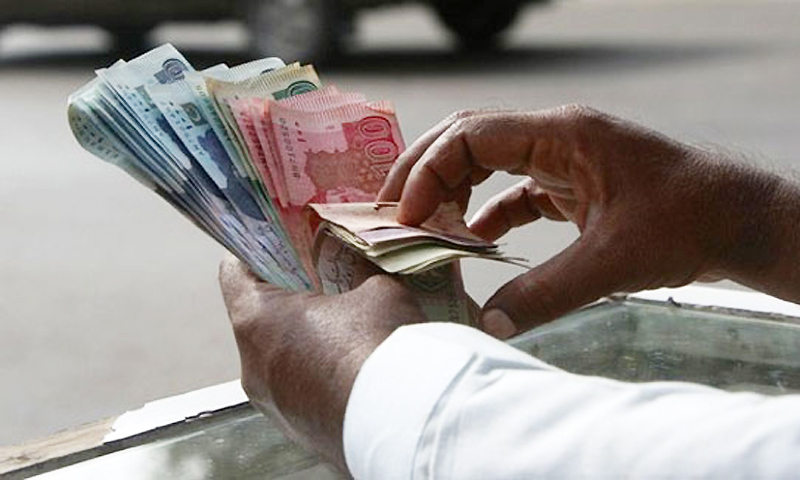ISLAMABAD: The government is expecting the inflation rate to “remain on the higher trajectory” over the next couple of years owing to second-round effect of currency depreciation, higher energy prices, rising commodity prices in international market and base money creation.
As such, the average inflation is expected to be 8.5 per cent in the next fiscal year (2019-20) that may touch 10pc by fiscal year 2020-21, a senior government official told Dawn.
The coming increase in energy and petroleum prices due in July will also play a role.
The official said these figures were shared with Prime Minister Imran Khan and four provincial chief ministers at a meeting of the National Economic Council (NEC) last week.
Read: Inflation hits 9.4pc, highest in five years
The meeting was told that “inflation remained on an upward trajectory during 2018-19. Inflationary pressures initially emanated from non-food side, but after December 2018 food inflation became major driver of inflation”. Headline inflation averaged 7pc for July-April this fiscal year compared to 3.7pc of the same period last year. Average sensitive price indicator was also higher in July-April 2018-19 at 4pc against 0.8pc of same period last year. Similarly, wholesale price index stood at 11.7pc in the first 10 months of the current fiscal year compared to 2.8pc of the last year.
Economic growth is expected to slightly recover during next fiscal, National Economic Council told
The NEC was informed that inflation in first 10 months of the current fiscal had increased mainly because of unprecedented supply shocks in the case of essential food items such as tomatoes and green chillies, higher than anticipated increase in international oil prices, an upward revision in domestic gas prices, a further increase in regulatory duties on imports and continuing second-round impact of previous exchange rate depreciation.
The country’s highest economic decision making body was told that economic growth was anticipated to slightly recover next year as macroeconomic stabilisation had been achieved through curtailing domestic demand. Fiscal consolidation along with regulatory measures would be aimed to ease the growing pressures on the external front.
The contractionary monetary and fiscal measures have decelerated economic growth since December 2017 and next year will be the second fiscal year of stabilisation and adjustment.
“Inflation is expected to remain on a higher trajectory, though the spikes will be contained through monetary contraction,” the NEC was told.
As such, the annual plan for next year envisages macroeconomic stability in view of fiscal consolidation, improving external account and revival in agriculture and industrial growth. Yet, there would be slight economic recovery to a growth rate of 4pc — on a small base of 3.3pc for current year — with targeted 3.5pc growth rate in agriculture, 2.4pc in industry and 4.8pc in services.
The recovery in agriculture is anticipated on the basis of better production of Kharif and Rabi crops owing to better weather condition forecasts and improved input supply. Therefore, there will be growth in major crops by 3.5pc, other crops 3.1pc, cotton ginned 2.5pc, livestock 3.6pc and fishery and forestry by 4pc and 2pc, respectively.
Likewise, the industrial recovery is envisaged for next year on the back of better energy supply, better investment climate and consistent economic policies. The expected higher growth of 4.8pc is based on expectation of higher growth in commodity producing sectors.
However, these “targets are subject to favourable weather conditions, managing current account deficit, consistent economic policies and aligned monetary and fiscal policies”, the NEC was forewarned.
The fiscal policy during fiscal year 2019-20 will target reducing fiscal deficit, mobilising additional resources, controlling current expenditure and switching to targeted subsidies while prioritising development expenditure.
Monetary policy, on the other hand, will be aimed at supporting adjustment process as agreed to with the International Monetary Fund to restore macroeconomics stability and manage aggregate demand.
“However, the challenge would be to strike a balance between growth and stability in such a way that monetary policy tools may not suffocate economic growth while containing inflationary pressure,” the political leadership was told.
Resurgence of global commodity prices in 2019-20 is viewed as a positive signal for exporters. Concerted efforts would be required to enhance quality of exportable items, diversify product range and look for new markets, hence, the trade deficit is projected to be 9.2pc of GDP.
With expected improvement in investment environment along with China-Pakistan Economic Corridor investments and better performance in industrial sector, exports are targeted to gain momentum and grow by 6.2pc while imports are projected to increase by 2.1pc.
The current account deficit is estimated at 2.8pc of GDP against estimated 4.4pc during current year.
Published in Dawn, June 3rd, 2019














































